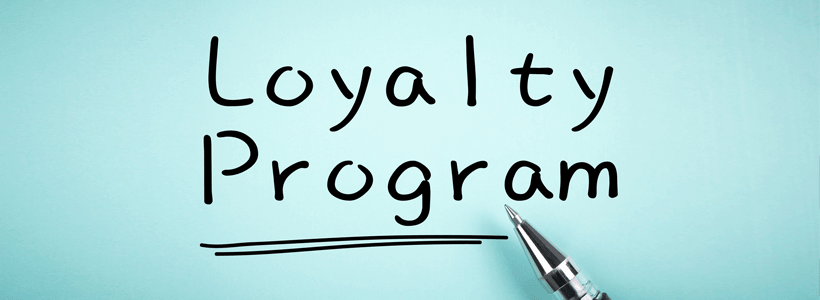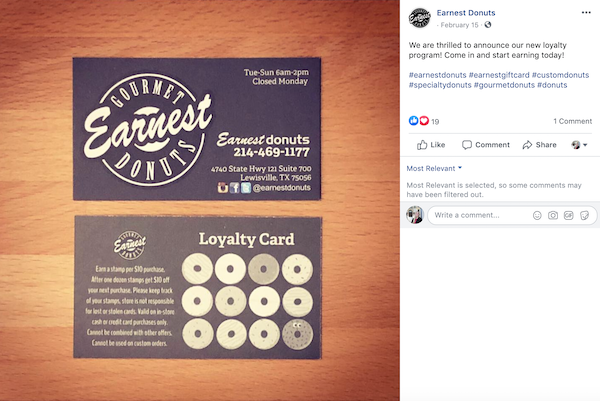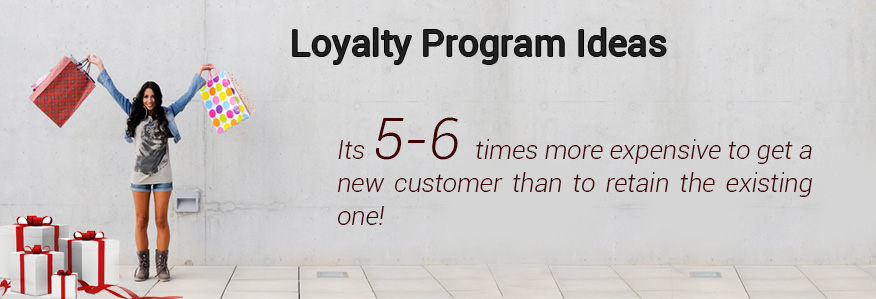All Categories
Featured
Table of Contents
In 37363, Kaleb Moon and Cara Vang Learned About Emotional Response

What if you could grow your company without increasing your spending? In reality, what if you could in fact minimize your spending but increase your sales, every year? Would you do it? If you're a company owner, then you'll likely provide a definite 'yes', a simple response to an even simpler question.
A rewards program tracks and benefits certain spending behavior by the consumer, providing unique benefits to loyal clients who continue to patronize a particular brand name. The more that the client spends in the shop, the more advantages they receive. With time, this incentive develops devoted customers out of an existing consumer base.

Even if you already have a reward program in place, it's an excellent concept to dig in and completely understand what makes consumer loyalty programs work, in addition to how to implement one that costs you little money and time. Don't stress, I'll help you with that. I'll break down the main benefits of a loyalty program and the finest ways to produce faithful consumers.
Let's dig in. Customer loyalty is when a customer go back to work with your brand name over your competitors and is largely affected by the favorable experiences that the client has with your brand name. The more positive the experience, the more likely they will return to patronize you. Client loyalty is exceptionally essential to organizations since it will assist you grow your business and sales faster than a simple marketing strategy that concentrates on recruiting brand-new clients alone.
A few methods to measure customer commitment consist of:. NPS tools either send out a brand efficiency study through email or ask consumers for feedback while they are checking out a service's website. This details can then be utilized to much better understand the likelihood of customer loyalty. A repurchase ratio determines the ratio of repeat purchasers versus one-time purchasers.
Customer commitment index (CLI). The CLI tracks customer commitment gradually and resembles an NPS study. However, it considers a few extra aspects on top of NPS like upselling and buying. These metrics are then utilized to examine brand commitment. A client commitment program is a marketing method that rewards consumers who make purchases and engage with the brand on an ongoing basis.
Consumer benefits programs are developed to incentivize future purchases. This motivates them to continue doing service with your brand. Customer loyalty programs can be set up in many different ways. A popular consumer loyalty program benefits consumers through a points system, which can then be spent on future purchases. Another type of consumer commitment program may reward them with member-exclusive advantages or complimentary presents, or it might even reward them by donating money to a charity that you and your clients are equally passionate about.
In 37601, Keyla Kirk and Jovan Bowers Learned About Network Marketing
By using benefits to your consumers for being faithful and supportive, you'll develop a connection with them, deepening their relationship with your brand and ideally making it less most likely for them to change to a competitor. You have actually likely seen consumer commitment programs in your own shopping experience, whether at your favorite cafes or your most frequented grocery stores.
However even if everybody is doing it doesn't suggest that's a sufficient reason for you to do it too. The better you comprehend the benefits of a customer rewards program, the more clearness you will have as you develop one for your own shop. You won't be sidetracked by interesting advantages and complicated commitment points systems.
Remember: work smarter, not harder. Client retention is the primary benefit of a rewards program that serves as a structure to all of the other benefits. As you provide rewards for your existing consumer base to continue to buy from your store, you will provide your store with a steady flow of money month after month.
By growing your retention rate, you can stop investing as much time or cash on increasing your general variety of customers. Why is this important? Faithful consumers have a higher conversion rate than brand-new consumers, implying they are more most likely to make a transaction when they visit your shop than a brand-new client.
By increasing your retention rate by just 5 percent, you can increase your revenues by 25 percent and as much as by 95 percent. Needless to state, your retention rate matters. Secret Takeaway: If you wish to significantly increase your profits, supply rewards for your existing consumers to continue to patronize your store.
And you won't need to invest money on marketing to get them there. Customer acquisition (aka generating brand-new clients) takes a great deal of effort and money to convince total strangers to trust your brand, concerned your store, and attempt your products. In the end, any cash earned by this new consumer is overshadowed by all of the money invested in getting them there.
Key Takeaway: If you wish to minimize costs, focus on client retention instead of client acquisition. When you concentrate on providing a favorable customized experience for your existing consumers, they will naturally tell their loved ones about your brand. And with each subsequent deal, loyal clients will inform much more people per transaction.
In Carlisle, PA, Lincoln Floyd and Kash Vasquez Learned About Target Market
The best part? Due to the fact that these brand-new customers originated from trusted sources, they are more likely to turn into faithful customers themselves, spending more typically than brand-new clients generated by other marketing efforts. The Chase Ultimate Rewards program, for instance, offers significant advantages for individuals who travel a lot.
The 'supreme benefits' that Chase cardholders receive include 2x points per dollar spent on all travel purchases in addition to main rental automobile insurance, no foreign transaction charges, trip cancellation insurance coverage, and purchase security. For people who travel a lotand have non reusable earnings to do sothere is a massive incentive to spend money through the ultimate rewards program.
This whole procedure makes redeeming rewards something worth extoling, which is exactly what lots of cardholders wind up doing. And to assist them do it, Chase uses a benefit for that too. Key Takeaway: Make it easy for your clients to boast about you and they will get the word out about your buy free.
As soon as you get the basics down, then utilizing a commitment rewards app can assist take care of the technical details. Here are the actions to get started with producing your client commitment program. No client desires to buy items they don't desire or need. The same goes for your loyalty program.
And the only way to customize an alluring consumer loyalty program is by thoroughly knowing your customer base. The best method to do this? By carrying out these techniques: Construct consumer contact information wherever possible. Ensure your service is constantly constructing an in-depth contact list that permits you to access existing clients as often and as easily as possible.

Track client behavior. Know what your consumers desire and when they desire it. In doing so, you can anticipate their wants and requires and provide them with a commitment program that will satisfy them. Classify client individual traits and preferences. Take a multi-faceted method, don't limit your loyalty program to just one opportunity of success.
Encourage social networks engagement. Frame strategies to engage with your clients and target market on social media. They will quickly supply you with extremely informative feedback on your services and products, permitting you to much better understand what they anticipate from your brand. As soon as you have actually exercised who your customers are and why they are working with your brand, it's time to decide which kind of loyalty rewards program will motivate them to stay devoted to you.
In 55318, Sanai Gates and Dustin Ray Learned About Marketing Campaign
However, the most common client commitment programs centralize around these primary concepts: The points program. This type of program concentrates on rewarding customers for every single purchase they make with points in a point system. These points can then either be used on future purchases or put towards some form of benefit.
The paid program. This kind of program requires customers to pay a one-time or annual charge to join your VIP list. Loyalty members who belong to this list have the ability to access unique rewards or member-exclusive benefits. The charity program. This kind of program is a little various than the others.
This is achieved by encouraging them to do company with the brand and, in return, their loyalty will be rewarded with a contribution to a charity. The tier program. This type of program focuses on increasing levels of brand commitment. The more loyal a client is to a brand, the higher tier they will reach and the much better the benefits they will get.
This type of program is simply as it sounds, where one brand partners with another brand name to offer their collective audiences with special member discounts or deals that they can redeem while doing service with either brand. The neighborhood program. This type of program incentivizes brand name loyalty by offering its members with access to a similar neighborhood of people.
This kind of program is fairly comparable to paid programs, however, the membership fee takes place on a routine basis rather than a one-time payment. Next, select which client interactions you 'd like to reward. Base these rewards around which interactions benefit your company one of the most. For example, to assist your company out, you can use action-based rewards like these: Reward customers more when doing service with your brand during a slow duration of the year or on an infamously sluggish day of organization.
Reward customers for engaging with your brand on social media. Incentivize particular products you are trying to move rapidly. Incentivize purchases that are over a particular dollar quantity. The idea is to make your client commitment program as simple as possible for your consumers to utilize. If your consumer loyalty program isn't personnel friendly, isn't simple to track, is too pricey to run, or isn't easy for your customers to use or understand, then staff and customers alike most likely won't benefit from it.
To remove these barriers to entry, consider incorporating a consumer loyalty software that will assist you continue top of all of these elements of your program. Some quality consumer program software application consist of:. CandyBar is a digital punch card program. It works by tracking your customer's purchases through an app on a computer, phone, or tablet.
In South Windsor, CT, Kennedi Mcmahon and Lyric Bowers Learned About Marketing Tips
Loyalty members can then check their rewards through text and company owner can use the program to call their customers. Yotpo. Yotpo is a cloud-based client commitment platform specifically for eCommerce businesses. This software application is particularly good at collecting every type of user-generated content, practical for tailoring a better client experience.
Loopy Commitment is a convenient client loyalty software for companies that predominantly utilize Google Wallet or Apple Pay as their payment platforms. The software application produces a digital loyalty card that sends out push alerts to their consumers' phones when they are in close proximity to their physical store. As soon as you have actually put in the time to decide which client loyalty methods you are going to implement, it's time to start promoting and registering your very first commitment members.
Usage in-store advertisements, integrate call-to-actions on your site, send promos through email newsletters, or upload marketing posts on social media to get your customers to sign up with. It's important to understand the main benefits of a consumer rewards program so that you can produce a personalized experience for both you and your consumer.
Think about it. You know what kinds of products your consumers like to purchase however do you understand what brings them back, day after day, week after week? What makes them select your store over the shop across the street? What makes them your consumer and not the customer of your greatest competitor? Surprisingly, the responses to these concerns do not boil down to discount rate prices or quality products.
Table of Contents
Latest Posts
Web Design And Applications - W3c Tips and Tricks:
Web Design Blog - Webdesigner Depot Webdesigner Depot Tips and Tricks:
53 Web Design Tools To Help You Work Smarter In 2022 Tips and Tricks:
More
Latest Posts
Web Design And Applications - W3c Tips and Tricks:
Web Design Blog - Webdesigner Depot Webdesigner Depot Tips and Tricks:
53 Web Design Tools To Help You Work Smarter In 2022 Tips and Tricks: